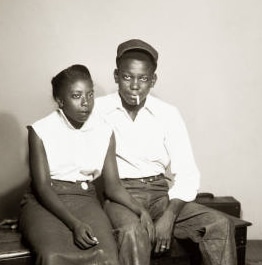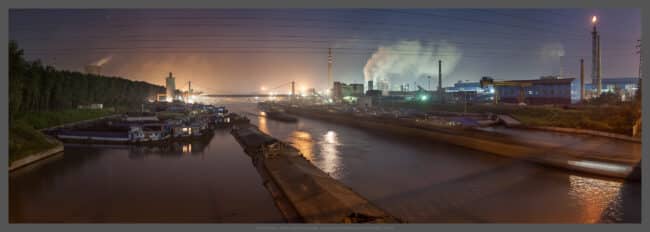Faces|Places celebrates the Harn’s growing photography collection. It highlights fifty-five photographs, several seen here for the first time. The exhibition takes us on a global tour through photographs that describe the look and feel of places, and the specificity of bodies and faces from around the world. Spanning eras, cultures, and genres, each is vastly different; yet they share recognizable states of being or becoming, such as exhaustion on a Coney Island beach or China’s industrial growth.
The French semiotician, Roland Barthes, in his book, Camera Lucida, writes that all photographs contain codes. Most of us know instinctively how to read them: a leather jacket suggests ‘rebel,’ a mountain elicits ‘majesty.’ Barthes offers two categories when looking at photographs that work inside and outside of these codes: the studium and punctum, respectively. Put simply, the studium works within culture as “a kind of education,” writes Barthes, as in the way a photographer conveys his/her response to a celebrity, or to rural Italy. The punctum, however, is personal; it is beyond the photographer’s reach. It is the viewer’s “delight or pain that pricks and bruises,” a poignant detail that jogs the memory or catches the breath—a person’s teeth, a gesture—different for every viewer (if it exists at all). Operating outside of language, the punctum comes from our subconscious, becoming the compelling, unspoken substance of our attraction to an image. Hence, Barthes observes, “Whatever it grants to vision, a photograph is always invisible: it is not it that we see.”
Barthes’s words continue through Faces|Places, as does the acclaimed poetry of Mary Oliver who, not unlike Barthes, delights in codes (through words, not images) that begin on the surface, then dive beneath it. Barthes and Oliver coax us into noticing more than what is visible: the particularity of existence, the veracity of being, histories and societies, Nature and Time, and the unique sensibilities of the artists behind the cameras.


